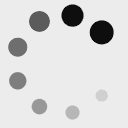Where the Grass is greener

This trip on the edge of surrealism transports the audience through the various corners of the suburbs in order to find where the grass is greener. An unsettling exploration of a seemingly peaceful place that takes a look beyond the white picket fence.
| Director | Guillaume Massie-Hamel |
| Actor | Yulia Kaiava |
| Share on |
To indulge in it or to extract oneself from it? Where the Grass is greener suggests that there's still a choice to be made, because even if a whole apparatus seems to have been put in place to fill them, cracks abound. Despite all the efforts made by planners to condition the imaginations of those who live there, they have failed. Such is the ambivalence between the planned ambitions and the lived spaces that a sense of unease permeates. A disturbing banality, since nothing is explicit. The score almost seems to unfold mechanically before our very eyes: recurring, meticulous practiced, calculated interactions. Everything seems to have been designed to seal off the imaginary, to delimit it, to cement it: an echo of the steady encroachment of urban development, which is gradually eroding the last patches of greenery, the last vestiges through which nature can barely be glimpsed. Yet the uniformity of architecture, the impersonal atmosphere, and the multiplicity of non-places all represent cracks, as our individualities are bound to break free from the boundaries imposed by such places. Where the Grass is greener explores the extent to which the emptiness of these spaces, where "normalcy" seems to reign, is in fact a source of upheaval.
Yulia Kaiava
Tënk Canada's editorial assistant

-

Français
23 mn
Language: Français -

English
23 mn
Language: English
- Année 2020
- Pays Quebec
- Durée 23
- Producteur UQAM (Université du Québec à Montréal)
- Langue French
- Sous-titres English
- Résumé court This trip on the edge of surrealism transports us through the various corners of the suburbs in order to find where the grass is greener.
To indulge in it or to extract oneself from it? Where the Grass is greener suggests that there's still a choice to be made, because even if a whole apparatus seems to have been put in place to fill them, cracks abound. Despite all the efforts made by planners to condition the imaginations of those who live there, they have failed. Such is the ambivalence between the planned ambitions and the lived spaces that a sense of unease permeates. A disturbing banality, since nothing is explicit. The score almost seems to unfold mechanically before our very eyes: recurring, meticulous practiced, calculated interactions. Everything seems to have been designed to seal off the imaginary, to delimit it, to cement it: an echo of the steady encroachment of urban development, which is gradually eroding the last patches of greenery, the last vestiges through which nature can barely be glimpsed. Yet the uniformity of architecture, the impersonal atmosphere, and the multiplicity of non-places all represent cracks, as our individualities are bound to break free from the boundaries imposed by such places. Where the Grass is greener explores the extent to which the emptiness of these spaces, where "normalcy" seems to reign, is in fact a source of upheaval.
Yulia Kaiava
Tënk Canada's editorial assistant
-

Français
Duration: 23 minutesLanguage: Français23 mn -

English
Duration: 23 minutesLanguage: English23 mn
- Année 2020
- Pays Quebec
- Durée 23
- Producteur UQAM (Université du Québec à Montréal)
- Langue French
- Sous-titres English
- Résumé court This trip on the edge of surrealism transports us through the various corners of the suburbs in order to find where the grass is greener.
